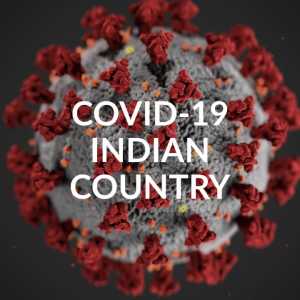
The Indian Health Service has updated its coronavirus data, showing results through March 8, 2021.
According to the data, 187,596 tests have returned positive for COVID-19, the disease caused by the coronavirus. That represents an increase of less than 1 percent from the 187,411 cases previously reported by the IHS.
Altogether, 2,109,399 coronavirus tests have been administered within the IHS through March 8, the data shows. That marks an increase of 0.2 percent from the day prior.
Since mid-October of 2020, the IHS has been providing additional information about the spread of the coronavirus within the system. The cumulative percent positive column shows the historical COVID-19 infection rate, meaning the number of tests that have returned positive since the onset of the pandemic.
Based on the cumulative percent positive, the highest rates have been seen in three areas. Two of them include the state of Arizona, indicating a disproportionate toll of COVID-19 in the state:
- Navajo Area — 16.6 percent
- Phoenix Area — 14.1 percent
- Oklahoma City Area — 13.3 percent
The 7-day rolling average positivity column offers a more contemporary look at the impact of the coronavirus. The data shows where COVID-19 cases have been increasing recently.
Based on the 7-day rolling average positivity, three areas continue to see higher COVID-19 rates. They follow:
- California Area — 10.9 percent
- Great Plains Area — 5.7 percent
- Navajo Area— 5 percent
Overall, 9.6 percent of IHS tests have been positive since the onset of the pandemic, the data shows. Meanwhile, the 7-day average has declined significantly after increasing during the holiday season. It now stands at 3.1 percent.
The data, however, is incomplete. While 100 percent of facilities run directly by the IHS are reporting data, only 33 percent of tribally managed facilities and 44 percent of urban Indian organizations are doing the same, the agency has told Indianz.Com.
COVID-19 Cases by IHS Area
Data are reported from IHS, tribal, and urban Indian organization facilities, though reporting by tribal and urban programs is voluntary. Data reflect cases reported to the IHS through 11:59 pm on March 8, 2021.
|
IHS Area
|
Tested
|
Positive
|
Negative
|
Cumulative
percent
positive *
|
7-day rolling
average
positivity *
|
|---|---|---|---|---|---|
| Alaska | 531,482 | 11,243 | 450,594 | 2.4% | 0.7% |
| Albuquerque | 89,554 | 8,028 | 61,375 | 11.6% | 4.8% |
| Bemidji | 143,375 | 10,148 | 129,698 | 7.3% | 3.3% |
| Billings | 94,491 | 7,302 | 83,933 | 8.0% | 2.0% |
| California | 71,523 | 7,525 | 60,434 | 11.1% | 10.9% |
| Great Plains | 133,653 | 13,849 | 119,296 | 10.4% | 5.7% |
| Nashville | 70,263 | 5,931 | 63,367 | 8.6% | 4.8% |
| Navajo | 229,112 | 31,007 | 155,763 | 16.6% | 5.0% |
| Oklahoma City | 452,317 | 59,471 | 387,882 | 13.3% | 4.9% |
| Phoenix | 164,660 | 23,129 | 140,665 | 14.1% | 3.7% |
| Portland | 104,246 | 7,249 | 96,237 | 7.0% | 2.5% |
| Tucson | 24,723 | 2,714 | 21,856 | 11.0% | 3.1% |
| TOTAL | 2,109,399 | 187,596 | 1,771,100 | 9.6% | 3.1% |
* Cumulative percent positive and 7-day rolling average positivity are updated three days per week.
HHS Small Ambulatory Program Awards $55 Million to 15 Tribes and Tribal Organizations (Indian Health Service)
Indian Health Service Announces New Deputy Director for Quality Health Care and Enterprise Risk Management (Indian Health Service)
Federal Emergency Management Agency (FEMA)
White House Office of Management and Budget (Joe Biden Administration)
Tuba City Regional Health Care Corporation (Arizona, Navajo Nation)
Oklahoma City Indian Clinic (OKCIC)
Indian Health Service (Department of Health and Human Services)
Navajo Nation Town Hall (Arizona, New Mexico, Utah)
Navajo Nation (Arizona, New Mexico, Utah)
Tribal organizations statement on advance appropriations for Indian Health Service
Indian Health Service Statement on Advance Appropriations (Department of Health and Human Services)
Indian Health Service (Department of Health and Human Services)
Indian Health Service (Department of Health and Human Services)
Navajo Nation (Arizona, New Mexico, Utah)
